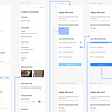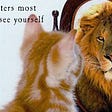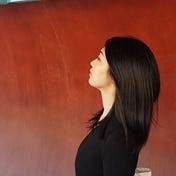My understanding of UX design and “Design Thinking”
In this article I will talk about my understanding of UX design and how I think about “Design Thinking”, as I have studied and entered the UX industry for more than one year.
01
What is UX Design?
Let me mentions two quotes from famous people.
Simon Sinek talked about The Golden Circle Theory, the middle is “Why”, followed by “How”, and the outermost circle is “What”. Apple becomes a disruptive company because it started from why and think outwards, explore how to make it better, and finally come up with the result what.
Don Norman said that, “Design is the way you experience everything, the world, life, include service, APP, Web. Design is a system, which concerns every detail in our daily life.”
What I learn is:
A good UX design starts not from what, but from why. As mentioned in “User Experience Elements”, design includes senses and function. When people talk about design, they are not talking about its principle, but about its experience and how it can help them solve problems.
User experience means “how a product interacts and functions with the outside world”. We will not design a full-featured coffee machine for home use for the general coffee consumers, because they need to set the amount of coffee powder, water amount, extraction time, all of these complicated work. They just want a cup of coffee! A machine that can be operated with one button and then wait and get a cup of coffee is better for them.
Starting from thinking about why people drink coffee at home, and digging into the details, when using this coffee machine, which functions/operations help us drink coffee more conveniently, and which ones confuse us. Thinking from “why”, we get a different “what”.
So, is it true to say “Design” = “Problem Solving”?
Maybe not quite accurate. In fact, it’s a bit too vague.
In our daily life, we are actually solving many problems, but not every time is a design. According to the definition, “design” can be interpreted as the conception and planning of the artificial things.
The key point is how “conception and planning” and distinguishing what kind of “artificial things” are.
“Man-made things” are usually tricky and complicated, because people themselves are complicated, and different people have different ideas and methods, so we will face all kinds of tricky problems created by people.
“Conception and planning” is a step in “framing problems”. From a certain standpoint, we need to frame the problem accurately and reasonably.
There is a “difficult problem” here. Various problems in practical application scenarios usually face different stakeholders.
I was major in Architecture. In the field of construction engineering, I clearly felt that conflicts of interest among real-estates, architecture designers, construction engineers, and government departments are ubiquitous, incompatible in many aspects.
- The construction engineering face a problem. The experienced veterans who have worked for 20 years and novices who have just worked for 1 or 2 years, have different attitudes when facing advanced technologies in the engineering field. It is kind of obvious that a novice would be more willing to accept new technologies, because he/she is young and smart, and new technologies can improve his/her work; while the veterans may not, and his/her position would be affected.
- Their boss will weigh whether the adoption of new technology will bring positive effects such as reducing labor and shortening time, or will the new technology not meet the market and cannot be connected with other collaborators, resulting in more rework and waste of resources?
- The government will think about what is beneficial to social progress.
- Real-estates will think about how to achieve the fastest speed, lowest cost, lowest risk, and highest profit…
There are various stakeholders involved, and unfortunately we may not be able to take care of everyone when we do design. Because there are too many points to consider: the complexity of the problem, the size of the problem involved, the type and value of the enterprise organization, the type of project, social culture, value orientation…
The design should be focused on a few aspects and be subtracted.
There is flexibility in choosing where to start. In fact, it is difficult to say whether each design is right or wrong. It is difficult to have both fish and bear’s paw. There is no right or wrong to choose fish or bear’s paw. To ensure that everyone has a job and food at the expense of industry progress, or to pursue the greatest efficiency by improving the iteration of the labor force, in fact, whichever approach has its advantages and disadvantages that cannot be ignored.
Therefore, there is no accurate method or answer for “conception and planning”.
In my opinion, the good way is to find a reasonable entry point, determine my position, and pay attention to other voices from the professional perspective - which the organization is best at - and the closely connected stakeholders, in the case of conforming to the values of the society and the organization, to frame the problem as completely as possible.
At the end of the day, UX design should meet business goals.
02
When learning experience design, maybe everyone knows the concept of “Design Thinking” or “Double Diamond Model”.
At the beginning of my career, when I learned this, I was moved by this concept.
Let’s look at the each step again:
- Empathize: we should have empathy, resonating thoughts to others.
- Define: what is the definition of my problem, how can I make clear of it.
- Ideate: what is my preliminary idea to the problem, what concept I formed.
- Prototype: Make a prototype or a MVP to see what it will be in a real environment.
- Test: test to see if it is applicable.
- Of course in the process of each step and between steps, we go back and repeat again and again…
- Implement: after hundreds of the process, we implement one solution.
This is very similar to our life path and career development. Design, and life, is an odyssey.
In other words:
- Go inside and see my own characteristics and strengths.
- Determine my goals, clarify the problems I am facing.
- To learn and see various fields without restrictions, slowly shrink and in-depth research, and continue to try in practice.
- Finally we gradually have a clear understanding of ourselves, and got an implementable career development plan.
Isn’t that the way of life? The road is never linear, and it will inevitably go through cycles, overthrows and restarts, and there must be no final optimal solution, which needs to be iteratively updated.
This is the passion I felt when I started learning design.
I hope this article will be helpful for you :) I am Aria ZHOU, a UX designer based in Shenzhen, China. I write about UX, self, growth and my experience in the world!






